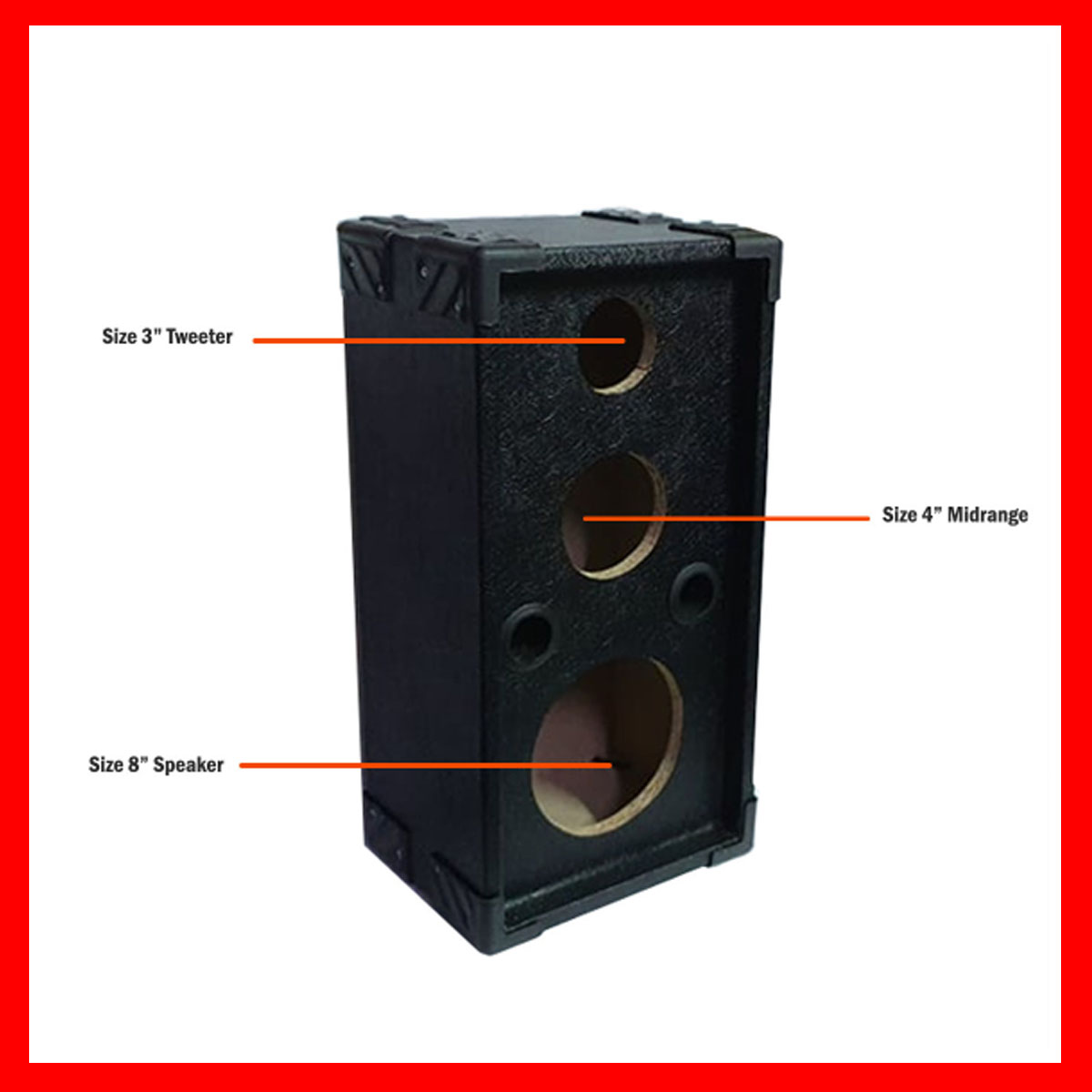
- #3 WAY SPEAKER ENCLOSURE DESIGN DRIVER#
- #3 WAY SPEAKER ENCLOSURE DESIGN FULL#
- #3 WAY SPEAKER ENCLOSURE DESIGN SERIES#
My total investment was $800inc in drivers, $60inc in MDF timber, probably $150 in misc items and $200inc in Symetrix DSP All up I spent about roughly $1300inc gst + a decent whack of my time.
#3 WAY SPEAKER ENCLOSURE DESIGN DRIVER#
In hind sight the mid enclosure should have been larger, and the enclosure volume for the bass driver should have also been larger to provide better extension. It doesn't sound as good as I would have liked, but you only learn from experience. Would I have done things differently if I had my time again? Sure a few. The 12.5.1 is my first DIY speaker active or passive, and the cabinet finish is excellent especially considering my minimal speaker building knowledge, wood-working skills and the overall monetary investment made. If you are the do-it-yourself type, we are happy to provide some basic design suggestions that use B& C components. Cabinets consist of little more than a well-built plywood box and a basic crossover network. I must say I am actually quite proud of myself looking at the completed speaker. Whether you're building new cabinets for you band or your business, the basics of cabinet design remains the same. All work was completed by myself on the weekends between my normal 9 to 5'er. Of this time 6 months was dedicated to design and procrastination, while the actual physical build process only took 3 months. The 12.5.1 3 way active speaker build took about 9 months to complete. As expected the plot is essentially identical to the 75 litre plot completed during the cabinet design phase. based on the above 76 litre net enclosure volume calculation. Just for consistency I have remodeled the SB acoustic 12inch. (106.7 - 30.794) = circa 75.9 litres, with extras I anticipate total usable volume will be 75 litres exactly. So to calculate a final working volume, I now need to take overall cabinet volume and subtract all calculated/known reductions. Type 4 1 x Woofer 18mm fixing brace behind cutout .1 litre The depth of the box would need to be increased from 5.5 inches to 6.25 inches. By increasing the volume to 3.5 liters the port and crossover can go inside the box. The box internal volume is 3 liters without the port volume or crossover. User rating, 4.9 out of 5 stars with 49 reviews. Enclosure Design: The box tuning was set to 68 Hz in a 3-liter box gives a surprisingly low 53 Hz F3.
#3 WAY SPEAKER ENCLOSURE DESIGN SERIES#
Type 1 2 x 115x274x18mm.1.134 litres total Bowers & Wilkins - 600 Series Dual 6-1/2' Passive 3-Way Floor Speaker (Each) - White. Slot Port (54x344x325mm).6 litres (outside dimensions) You will note, I did not measure the tweeter displacement, because its net displaced volume is negligible.

OK, so now that I have the displacement figures for both the mid and woofer, I can reconcile the volume of the main cabinet. The images below show the completed crossover and testing of the 3-way crossover network with the Hi-Vi drivers.The displacement calculator in this instance, spits out 2.47 litres displacement. Hi-Vi 3 Way Crossover Frequency Response PlotĪll of the crossover parts included the pcb are from PartsExpress. The modelled frequency response plot of the 3-way crossover is shown below. A schematic of the Hi-Vi 3 way crossover design is shown below. An L-pad circuit I felt was essential in keeping the response of the speaker perfect as possible. 500Hz and 4000Hz were chosen as the crossover frequencies.
#3 WAY SPEAKER ENCLOSURE DESIGN FULL#
I designed simply what best fit the drivers' capabilities while focusing on keeping the woofer in doing its job handling the bass, the mids handling the full midrange and so on. : Design Goals, Driver Selection, Enclosure Design, Enclosure Constructionģ-Way Crossover Design - DIY 3-Way Hi-Vi Tower Speaker 1.618 - DIY 3-Way Hi-Vi Tower Speaker Project


 0 kommentar(er)
0 kommentar(er)
